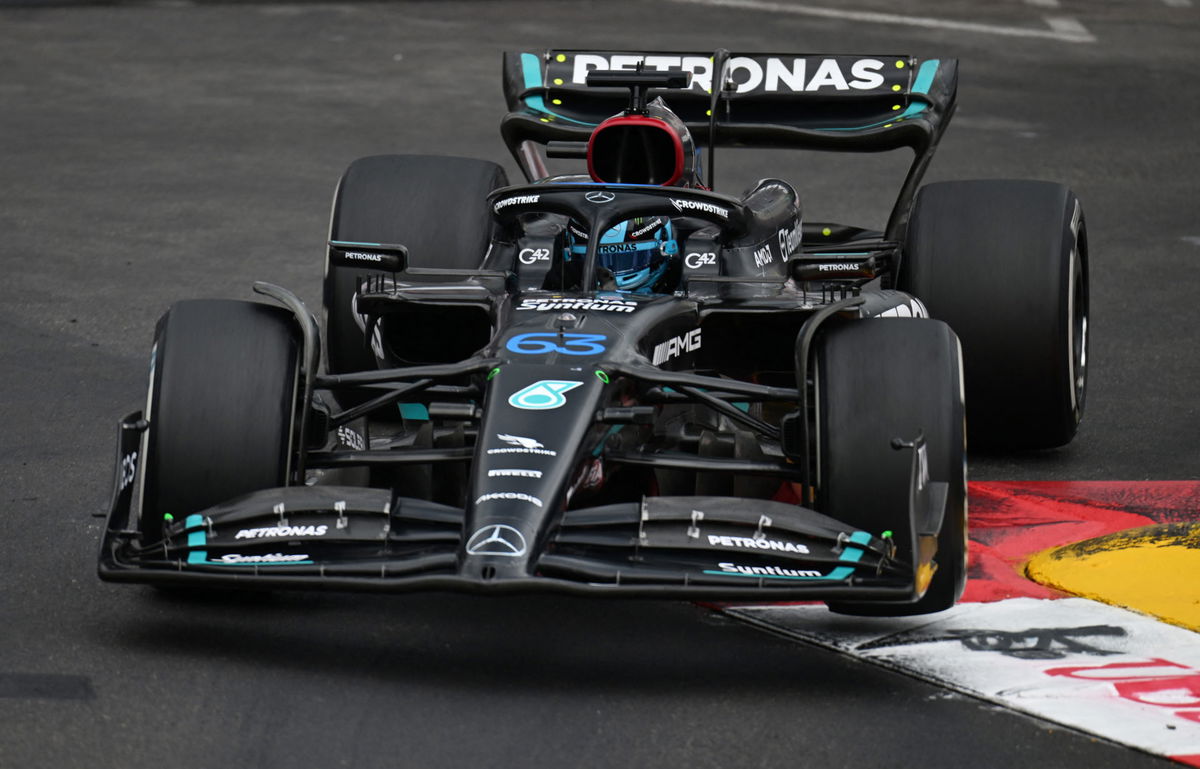
Reuters
Formula One F1 – Monaco Grand Prix – Circuit de Monaco, Monte Carlo, Monaco – May 28, 2023 Mercedes’ George Russell in action during the race Pool via Reuters/Christian Bruna

Reuters
Formula One F1 – Monaco Grand Prix – Circuit de Monaco, Monte Carlo, Monaco – May 28, 2023 Mercedes’ George Russell in action during the race Pool via Reuters/Christian Bruna
In the mesmerizing world of Formula 1, where every millisecond counts and the pursuit of perfection is relentless, the spotlight often falls on the thunderous engines, aerodynamic marvels, and lightning-quick pit stops. Yet, in the intricate dance of speed and precision, one silent hero plays a role of paramount importance—the braking system.
Watch What’s Trending Now!
Brakes in a Formula 1 car are not just tools for deceleration; they are the conductors of a symphony, orchestrating the harmony between speed and control. The significance of braking extends far beyond the mere act of slowing down; it influences every facet of a racer’s journey around the circuit, from the delicate ballet of tire adhesion to the adrenaline-pumping dance through each corner. Intrigued about how it all works? Let’s find out.
ADVERTISEMENT
The Basics of F1 Brake Systems
The brake system in an F1 car shares some similarities with a road car but is far more sophisticated to meet the demands of high-speed racing.
When a driver presses the brake pedal, it initiates the compression of two master brake cylinders—one for the front wheels and one for the rear. This action generates fluid pressure, which is then directed to the front brake calipers. In a straightforward process, the fluid pressure activates six pistons inside each front caliper, clamping brake pads against the disc, creating friction that slows down the car. However, the complexity arises when it comes to the rear wheels.
Top Stories
Who Is Oscar Piastri’s Father, Chris Piastri? Co-Founder of Multibillion Dollar Automotive Company

3 Years After His Death, Niki Lauda’s Wife Brutally Disrespects Him to Initiate $32,000,000 Battle Against Own Children

Who Are Liam Lawson’s Parents? All About Jared Lawson and Kristy Lawson

“Is This Alex or Charlotte?”: Charles Leclerc’s Cozy Image Triggers Confusion as Blast From the Past Sends F1 Fans Into a Frenzy

After GF Magui Corceiro’s Ugly Fight With Brit’s Ex Luisinha, Lando Norris Reunites With Supermodel in Spain

ADVERTISEMENT
ADVERTISEMENT
At the rear, braking involves three sources: traditional friction brakes, engine braking (resistance from the spinning engine), and electrical braking through the MGU-K (Motor Generator Unit – Kinetic). The MGU-K also uses this deceleration to gain back some of the energy, thanks to the ingenious ERS system. The Brake By Wire (BBW) system orchestrates these components to deliver the desired retardation. When the driver presses the brake pedal, the fluid pressure is picked up by an electronic pressure sensor, creating a signal representing the overall rear braking demand. This signal is then processed by the Electronic Control Unit (ECU), which commands the three rear systems to act cohesively.
Read more: What Is Out Lap in F1? How Does It Differ From In Lap?
The BBW system offers complexity for two primary reasons: safety and performance. In case of BBW system failure, the traditional hydraulic backup ensures the brakes can function normally. However, the performance advantage comes from the dynamic capabilities of BBW. It allows the system to adjust the rear braking balance based on the driver’s input and the car’s setup, enhancing braking stability and responsiveness.
ADVERTISEMENT
Understanding Brake Balance
Unlike conventional vehicles, where braking might seem like a straightforward affair, the delicate equilibrium of brake balance in F1 is a nuanced dance that significantly impacts a driver’s ability to drive the car fast through the corners.
At the core of brake balance lies the dynamic distribution of braking force between the front and rear wheels. The ideal brake balance ensures that neither the front nor rear tires bear an undue burden during deceleration, allowing the car to navigate corners with finesse.
ADVERTISEMENT
ADVERTISEMENT
Let’s break (pun intended) this down in simple terms. How important is finding the right brake balance? Well, if you press the brakes too much at the back, the car might spin out of control, and if you press too much at the front, the car might not turn well. So, finding the right balance between the front and back brakes is like finding the perfect dance moves to navigate each corner smoothly.
In order to achieve this stability, F1 uses the BBW system. Going with the dance metaphor, consider the BBW system to be the choregrapher for the whole routine. When the driver presses the brake pedal, this system decides how much pressure should go to the front and back brakes. It’s not fixed; it adjusts based on what the driver needs in different parts of the dance, or, in this case, the racetrack.
ADVERTISEMENT
Forces, Timing, and Temperature Management
F1 drivers exert a substantial force on the brake pedal, requiring strong legs to generate the necessary braking force. The cars decelerate at around 5G, and the driver’s leg weight on the brake pedal provides additional assistance. Despite the intense force applied, drivers must delicately modulate their pedal effort to navigate the car through corners at the limit of tire adhesion.
ADVERTISEMENT
The optimal timing for braking depends on various factors such as fuel load, tire compound, and degradation. During the race, these variables constantly change, demanding reactive adjustments from drivers. Qualifying offers more consistency, but the first corner on lap one remains a challenging moment, requiring drivers to estimate grip levels and make critical decisions based on limited track time before the race begins.
Brake discs in F1 cars can reach temperatures exceeding 1,000°C, necessitating effective cooling mechanisms. Over 1,000 holes in the brake discs maximize surface area for cooling. Cooling primarily occurs on straights, where high-speed travel allows significant air passage through the brake ducts. However, tracks like Monaco pose challenges due to numerous corners and short straights, making brake cooling more difficult.
Excessive brake temperatures can lead to “fade,” reducing mutual friction between brake pads and discs, making the brakes less effective. Managing brake temperatures is crucial for performance, as both the brake system and dispersed heat impact aerodynamics. Finding the right balance in brake duct size is essential, as larger ducts improve cooling but worsen aerodynamic efficiency.
Watch This Story | What is Formula 2?–How Is it Different from Formula 1?
This article is just a scratch into the brilliant world of engineering within Formula 1. For the cars to go as fast as they do, all the while remaining safe for the drivers and spectators is truly a marvelous effort from the most brilliant minds humanity has to offer. Braking and Brake balance are just a small example of the thought and resources that go behind making Formula 1 as successful as it is.
ADVERTISEMENT
ADVERTISEMENT
ADVERTISEMENT

